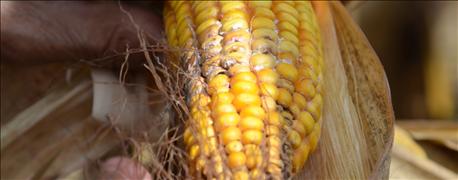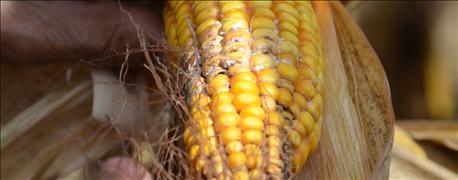
If you have questions about crop diseases, you no longer need to be in the dark. Answers are as close as your computer keyboard. The Crop Protection Network provides a storehouse for information written and reviewed by specialists at land-grant universities in the U.S., with input from USDA and the Grain Farmers of Ontario.
Corn Illustrated 11/28: 10 tips to plan for the 2017 growing season

STUDY THE DISEASE: The next step after you find disease in corn is to identify the disease to determine if it may produce a mycotoxin that is harmful to animals or humans.
If you haven’t checked it out yet, visit cropprotectionnetwork.org. This article uses one of the publications available at the site to uncover answers to frequently asked questions about mycotoxins. "Mycotoxin FAQs" was authored by 11 university specialists, including Kiersten Wise and Charles Woloshuk from Purdue University’s Plant Pathology Department.
Here are frequently asked questions about mycotoxins related to corn diseases. Some of you may have asked these questions in 2016. Ear rots that produce these toxins were common in some areas.
What are mycotoxins?
Mycotoxins are natural chemicals produced by certain fungi, some of which cause ear rots in corn. Mycotoxins are nonliving compounds that are byproducts that the fungi produce. Mycotoxins can have detrimental health effects to both humans and animals if they eat contaminated food or feed.
What mycotoxins occur in corn?
There are five major mycotoxins in corn: aflatoxins from aspergillus ear rot; deoxynivalenol (DON), also called vomitoxin, and zearalenone, both from gibberella ear rot; fumonisins from fusarium ear rot; and ochratoxin from Penicillium verrucosum, and sometimes from aspergillus.
What are the effects of mycotoxins?
Effect varies by type, dose and animal species. Aflatoxin can affect the liver, lead to cancer and suppress the immune system. Fumonisins can affect the liver, lead to cancer, cause pulmonary edema (fluid in the lungs), and cause irreversible, fatal brain damage in horses and rabbits. DON often makes animals vomit and refuse feed. It can also affect the central nervous system. Zearalenone can cause estrogen overload, which is dangerous to female breeding animals. Ochratoxin causes cancer and is toxic to the kidneys.
What levels of mycotoxins are safe in food and feed?
The Food and Drug Administration and Health Canada have issued action levels for aflatoxin. These are legally allowed amounts. They have issued advisory or cautionary levels for DON and fumonisins. Concentrations vary by mycotoxin and intended final use of the corn.
If end products exceed an action level, law may require that product to be destroyed. Acceptable levels are often set at the point of sale and in contracts. Corn for export must meet limits set by each country. These are often more stringent than U.S. levels. Refer to cornmycotoxins.com for more details.
Corn Illustrated 11/21: 6 steps to getting more reliable soil test results
One way to minimize mycotoxin problems is to manage ear rots as much as possible. One of the newest publications available at the Crop Protection Network website deals with managing corn ear rots. This 2016 publication goes into more detail about the life cycle of each fungus that causes these diseases. It also provides more information about mycotoxins themselves.
About the Author(s)
You May Also Like




